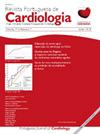Post-myocardial infarction patient pathways in Portugal
IF 1.6
4区 医学
Q3 CARDIAC & CARDIOVASCULAR SYSTEMS
引用次数: 0
Abstract
Acute myocardial infarction (AMI) is a condition that affects 12 000 Portuguese individuals annually. In Portugal, disease management foresees three levels of services according to the Cardiology Referral Network. This study aims to characterize the path taken by AMI patients in Portugal after hospital treatment, at the different hospital levels. Subsequently, it aims to propose recommendations for improvements. A Steering Committee, composed of cardiology experts in AMI was responsible for the project methodology. A literature review was performed to systematize national and international AMI guidelines, followed by structured interviews of stakeholders involved in the management of these patients in seven hospitals different levels in Portugal. The study ended with a consensus meeting to analyze the results and develop recommendations. Regarding communication and liaison between hospitals in the referral network: a clear distinction was observed between hospitals in urban areas with a relatively small referral area for level 2 services versus inland hospitals, to which patients from broader areas were referred. From the point of view of communication between professionals regarding the patient's clinical information, only in level 3 hospitals in the referral network was there a greater interconnection of systems and consequent greater ease in information flows. The latter had structured cardiac rehabilitation programs, which included the integration of in-house and community facilities, in line with European Society of Cardiology recommendations. Finally, regarding the frequency of post-discharge hospital follow-up and the professionals involved, in most hospitals, follow-up was reported with the first visit at three months post-discharge, and then repeated, on average, every six months for a period between one and two years in non-atypical patients. There is high variability in the support and practices implemented to promote secondary prevention of AMI at different hospitals levels in Portugal. There is a need to review the patient pathway considering follow-up by Cardiology in the referring hospital until discharge from the consultation to a General Practitioner; implementation of Smoking Cessation Programs; Nutrition; Psychology and Physical Therapy, adjusted to the different hospital levels. Implementation of a cardiac rehabilitation program is key.
葡萄牙心肌梗死后患者路径。
急性心肌梗死(AMI)是一种每年影响12000葡萄牙人的疾病。根据心脏病转诊网络,在葡萄牙,疾病管理预计有三个级别的服务。本研究旨在描述葡萄牙AMI患者在不同医院级别接受医院治疗后所采取的路径。随后,它旨在提出改进建议。由AMI心脏病学专家组成的指导委员会负责该项目的方法学。对文献进行了回顾,将国家和国际AMI指南系统化,随后对葡萄牙七家不同级别医院中参与这些患者管理的利益相关者进行了结构化访谈。研究结束时召开了一次共识会议,分析结果并提出建议。关于转诊网络中医院之间的沟通和联络:在转诊区域相对较小的城市地区的医院与内陆地区的医院之间存在明显区别,内陆地区的患者被转诊到这些地区。从专业人员之间就患者临床信息进行沟通的角度来看,只有在转诊网络中的三级医院,系统之间的互连程度更高,因此信息流动更容易。后者已经制定了心脏康复计划,其中包括内部和社区设施的整合,符合欧洲心脏病学会的建议。最后,关于出院后医院随访的频率和所涉及的专业人员,在大多数医院,随访是在出院后三个月第一次就诊,然后在非典型患者中平均每六个月重复一次,持续一到两年。葡萄牙各级医院在促进急性心肌梗死二级预防的支持和做法方面存在很大差异。考虑到转诊医院的心脏病学随访,有必要审查患者的路径,直到从会诊到全科医生出院;实施戒烟计划;营养;心理和物理治疗,适应不同的医院水平。实施心脏康复计划是关键。
本文章由计算机程序翻译,如有差异,请以英文原文为准。
求助全文
约1分钟内获得全文
求助全文
来源期刊

Revista Portuguesa De Cardiologia
CARDIAC & CARDIOVASCULAR SYSTEMS-
CiteScore
2.70
自引率
22.20%
发文量
205
审稿时长
54 days
期刊介绍:
The Portuguese Journal of Cardiology, the official journal of the Portuguese Society of Cardiology, was founded in 1982 with the aim of keeping Portuguese cardiologists informed through the publication of scientific articles on areas such as arrhythmology and electrophysiology, cardiovascular surgery, intensive care, coronary artery disease, cardiovascular imaging, hypertension, heart failure and cardiovascular prevention. The Journal is a monthly publication with high standards of quality in terms of scientific content and production. Since 1999 it has been published in English as well as Portuguese, which has widened its readership abroad. It is distributed to all members of the Portuguese Societies of Cardiology, Internal Medicine, Pneumology and Cardiothoracic Surgery, as well as to leading non-Portuguese cardiologists and to virtually all cardiology societies worldwide. It has been referred in Medline since 1987.
 求助内容:
求助内容: 应助结果提醒方式:
应助结果提醒方式:


